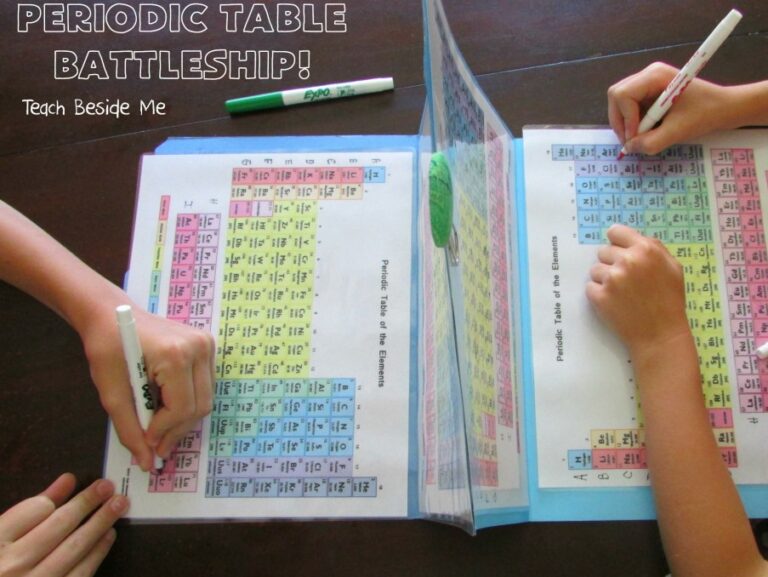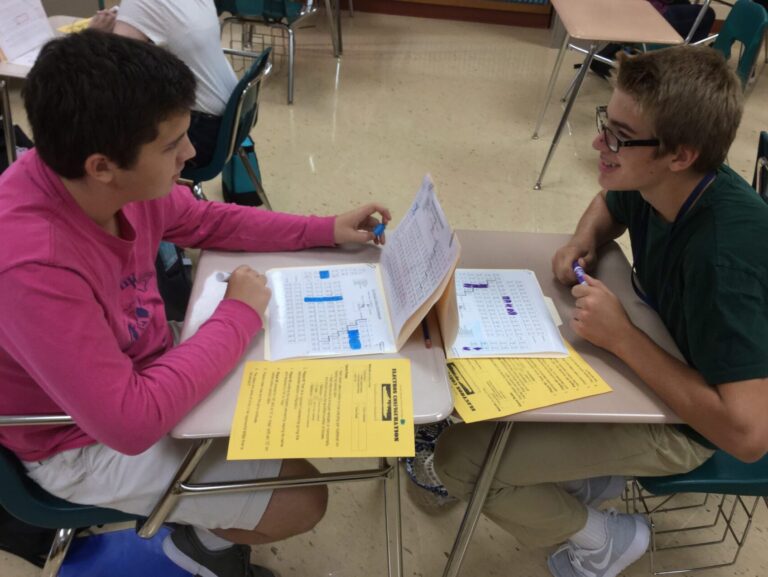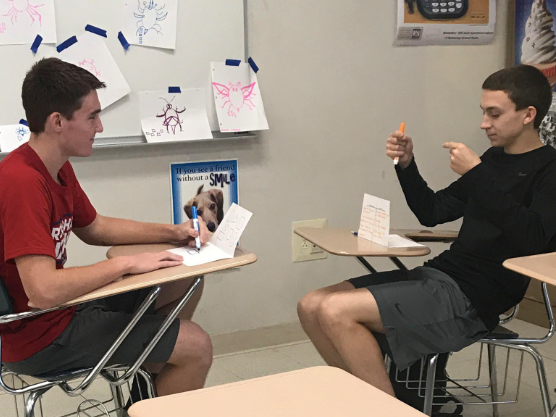Match Mine
Partners sit on opposite sides of a barrier with identical game boards and game pieces. One is designated to be the Sender, the other the Receiver. The goal is for the Receiver to perfectly reproduce the Sender’s game board using only verbal cues.
The Sender arranges his or her pieces on the board while the Receiver waits quietly. The Sender then gives the Receiver directions to match the Sender’s arrangement of pieces on the game board.
When finished, partners set their game boards side by side to check for accuracy, praise one another, and develop improvement strategies. Roles are switched and the game is played again.
This helps students develop communication skills such as asking for clarification, checking for understanding, and giving unambiguous directions, but can also be used with academic content.

Source
Kagan, S. and Kagan, M. (2017). Kagan Cooperative Learning. San Clemente: Kagan Publishing, p.6.42.


